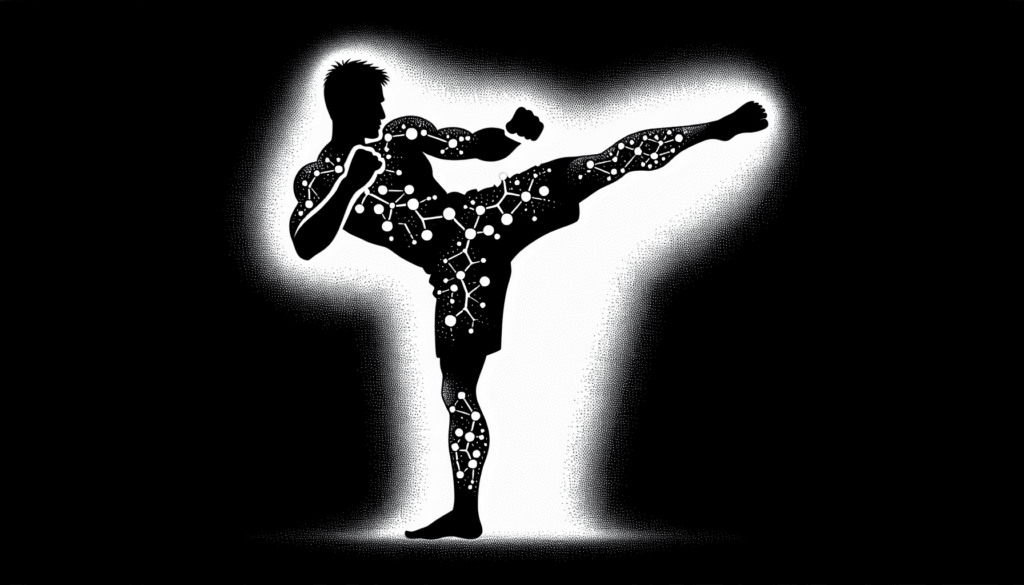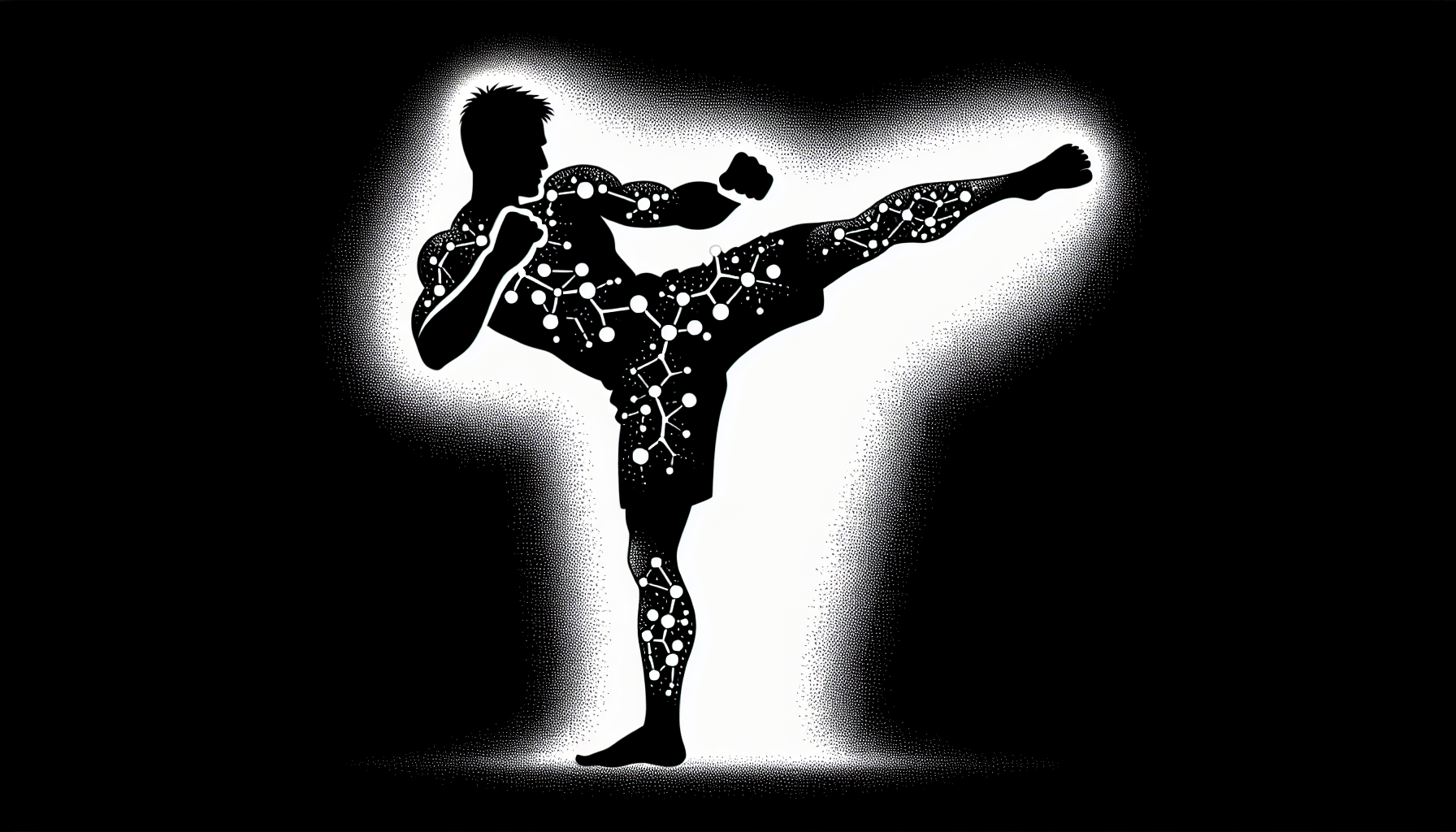Are you an MMA enthusiast or practitioner? If so, then you know that staying injury-free is crucial to your success in the sport. One area that often gets overlooked but deserves special attention is the lower back. Lower back pain can be debilitating and hinder your performance in the octagon. In this article, we will provide you with valuable tips and techniques to prevent lower back pain, allowing you to train and compete at your best. So, let’s get started and keep your back strong and pain-free!

Understanding the Causes of Lower Back Pain in MMA
Lower back pain is a common issue experienced by many MMA fighters. It can be debilitating and hinder performance both inside and outside the cage. Understanding the causes of lower back pain is crucial in preventing and managing this condition effectively. There are several factors that contribute to lower back pain in MMA, including overuse and repetitive strain injuries, poor technique and biomechanics, weak core muscles, inadequate warm-up and cool-down, and improper nutrition and hydration.
Overuse and repetitive strain injuries
One of the leading causes of lower back pain in MMA is overuse and repetitive strain injuries. These occur when the same movement or motion is performed repeatedly without allowing sufficient time for rest and recovery. The constant stress placed on the muscles and ligaments of the lower back can lead to chronic pain and discomfort. It is important to recognize the signs of overuse and take the necessary steps to prevent or manage it.
Poor technique and biomechanics
Another common cause of lower back pain in MMA is poor technique and biomechanics. When executing strikes, takedowns, or other techniques incorrectly, excessive strain is placed on the lower back, leading to injuries. It is crucial to learn proper technique and maintain good form to prevent unnecessary stress on the lower back.
Weak core muscles
Weak core muscles are also a contributing factor to lower back pain in MMA fighters. The core muscles, including the abdominal muscles, back muscles, and muscles around the pelvis, provide stability and support to the spine. When these muscles are weak, the lower back is forced to compensate, leading to pain and discomfort. Strengthening the core through specific exercises can help alleviate lower back pain and improve performance.
Inadequate warm-up and cool-down
Failure to properly warm up and cool down before and after training sessions can lead to lower back pain. A warm-up routine helps increase blood flow to the muscles, preparing them for the physical demands of training. Skipping this crucial step can increase the risk of injury, including lower back pain. Similarly, a proper cool-down routine helps reduce muscle soreness and stiffness, preventing post-training discomfort.
Improper nutrition and hydration
Nutrition and hydration play a vital role in overall training and recovery, including the prevention of lower back pain. Failing to consume a balanced diet and maintain proper hydration levels can lead to decreased muscle strength and endurance, making the lower back more vulnerable to injuries. Including anti-inflammatory foods and staying hydrated can significantly reduce the risk of lower back pain.
Importance of Body Conditioning
Body conditioning is a fundamental aspect of injury prevention in MMA. By improving overall strength, flexibility, and cardiovascular fitness, fighters can reduce the risk of lower back pain and other injuries. Incorporating strength training exercises, flexibility exercises, and cardiovascular fitness routines into the training regimen is crucial for maintaining optimal performance and preventing lower back pain.
Strength training
Strength training exercises focusing on the muscles of the core, back, and legs are essential for maintaining a strong and stable lower back. Exercises such as deadlifts, squats, and kettlebell swings can help strengthen the muscles supporting the spine, reducing the risk of lower back pain.
Flexibility exercises
Flexibility exercises play a crucial role in injury prevention, as they help maintain proper joint range of motion and reduce muscle imbalances. Stretching exercises targeting the hips, hamstrings, and lower back can promote flexibility and alleviate tightness, reducing the risk of lower back pain.
Cardiovascular fitness
Improving cardiovascular fitness is vital for MMA fighters. Cardiovascular exercises, such as running, cycling, or swimming, help enhance endurance and stamina during training and fights. This increased cardiovascular fitness can protect the lower back by allowing the muscles to work efficiently and prevent unnecessary strain.
Proper Technique and Biomechanics
To prevent lower back pain in MMA, it is essential to focus on proper technique and biomechanics during training and competitions. By following these guidelines, fighters can reduce the risk of injuries and alleviate stress on the lower back.
Engaging the core
Engaging the core is crucial in maintaining stability and reducing the strain on the lower back. By consciously activating the abdominal muscles and maintaining a strong core throughout movements, fighters can protect the lower back from excessive stress.
Maintaining proper posture
Proper posture is essential for minimizing the risk of lower back pain. Maintaining a neutral spine alignment and avoiding slouching or arching can help distribute the load evenly on the muscles of the lower back, reducing the risk of strain and injuries.
Balancing weight distribution
Proper weight distribution is key to preventing excessive stress on the lower back. When executing strikes, takedowns, or ground techniques, evenly distributing the weight between the legs and maintaining a stable base can minimize the strain on the lower back.
Using hips effectively
Proper hip movement is crucial in MMA to generate power and protect the lower back. Using the hips effectively when striking or executing takedowns helps transfer the force through the body, reducing the strain on the lower back. Learning proper hip mechanics and incorporating them into techniques can significantly reduce the risk of lower back pain.
Core Strengthening Exercises
Strengthening the core is vital for preventing lower back pain and enhancing performance in MMA. These exercises target the muscles of the abdominal region, lower back, and pelvis, providing stability and support to the spine.
Planks
Planks are excellent exercises for strengthening the core muscles. By assuming a push-up position and holding the body in a straight line, with the forearms or hands on the ground, the abdominal muscles, back muscles, and pelvis stabilizers are engaged. Holding the plank for 30-60 seconds, repeating for several sets, can effectively strengthen the core.
Russian twists
Russian twists target the rotational muscles of the core, helping improve stability and reduce the risk of lower back pain. Sit on the ground, lean back slightly, and lift the legs off the ground while keeping a straight spine. Twist the upper body from side to side, touching the ground with the hands. Repeat for several sets, gradually increasing the difficulty as strength improves.
Squat and press
The squat and press exercise is a compound movement that engages the muscles of the core, legs, and shoulders. Begin by holding a dumbbell or kettlebell at shoulder level. Perform a squat, maintaining proper form, and as you return to the starting position, press the weight overhead. This exercise targets multiple muscle groups, including the core, contributing to overall stability and strength.
Superman pose
The superman pose targets the muscles of the lower back, promoting strength and stability. Lie face down on the ground, with arms extended in front of you, and legs straight. Lift the arms, chest, and legs off the ground simultaneously, holding the position for a few seconds, then lower back down. Repeat for several reps to strengthen the muscles of the lower back.

Effective Warm-up and Cool-down
A proper warm-up and cool-down routine is crucial for preventing lower back pain and optimizing performance in MMA. It prepares the body for training or competition, and aids in recovery post-training. Here are some effective warm-up and cool-down techniques to incorporate into your routine:
Dynamic stretching
Dynamic stretching involves moving the muscles and joints through a full range of motion. This type of stretching helps increase blood flow, warm up the muscles, and improve flexibility. Incorporate exercises such as leg swings, arm circles, and walking lunges into your warm-up routine to prepare the body for the demands of training.
Joint mobilization exercises
Joint mobilization exercises help warm up the joints and improve their range of motion. Perform gentle movements and rotations of the hips, shoulders, and spine to prepare the joints for training. This helps reduce the risk of lower back pain by ensuring the joints are ready for the movements required in MMA.
Foam rolling
Foam rolling is a form of self-myofascial release that helps reduce muscle tension and improve flexibility. Roll the foam roller along the muscles of the lower back, hips, and legs to release any knots or tightness. Foam rolling prior to training can help increase blood flow to the muscles, preventing lower back pain.
Static stretching
Static stretching involves holding a stretch for an extended period, usually around 30 seconds to 1 minute. This type of stretching helps improve flexibility and can be beneficial during the cool-down phase. Focus on stretching the muscles of the lower back, hips, and legs to relieve tension and promote relaxation.
Avoiding Overtraining and Repetitive Strain Injuries
Overtraining and repetitive strain injuries are common in MMA, and they can contribute to lower back pain. It is essential to recognize the signs of overtraining and take preventative measures to avoid these injuries.
Proper rest and recovery
Rest and recovery are crucial components of any training program, as they allow the body to repair and adapt to the stresses of training. Make sure to incorporate rest days into your training schedule and prioritize adequate sleep to promote recovery and prevent overtraining.
Gradual increase in training intensity
Gradually increasing the intensity of your training sessions allows your body to adapt and reduce the risk of injuries. Avoid sudden spikes in intensity or volume, and listen to your body’s signals. If you experience persistent lower back pain or any other discomfort, reduce the training load to allow for proper recovery.
Implementing cross-training
Cross-training involves incorporating different types of physical activities or exercises into your training routine. It helps prevent overuse injuries by giving the muscles and joints a break from repetitive movements. By engaging in activities such as swimming, cycling, or yoga, you can mitigate the risk of lower back pain and enhance overall fitness.
Listening to your body
One of the most important aspects of injury prevention is listening to your body. Pay attention to any warning signs of pain or discomfort in the lower back, and do not ignore them. If something feels off, take a break or seek professional advice to prevent further damage. Ignoring the signs and pushing through the pain can lead to more severe injuries and long-term consequences.
Maintaining Nutritional Balance and Hydration
Proper nutrition and hydration are essential for maintaining optimal health, performance, and preventing lower back pain in MMA. Here are some key considerations to keep in mind:
Eating a balanced diet
A balanced diet that includes a variety of nutrient-rich foods is essential for overall health and injury prevention. Make sure to consume a mix of lean proteins, healthy fats, and complex carbohydrates to support muscle recovery and energy levels. Include plenty of fruits, vegetables, and whole grains to provide essential vitamins, minerals, and antioxidants.
Consuming sufficient protein
Protein is crucial for muscle repair and growth. MMA fighters should consume sufficient amounts of high-quality protein sources, such as lean meats, fish, eggs, and plant-based proteins. Adequate protein intake can aid in recovery, reduce muscle soreness, and minimize the risk of lower back pain.
Staying hydrated
Proper hydration is essential for optimal performance and injury prevention. Dehydration can lead to muscle cramps, fatigue, and reduced overall performance. Make sure to drink enough water throughout the day, especially before, during, and after training sessions. Avoid excessive caffeine and alcohol consumption, as they can contribute to dehydration.
Including anti-inflammatory foods
Incorporating anti-inflammatory foods into your diet can help reduce inflammation and alleviate lower back pain. Foods such as fatty fish (salmon, sardines), turmeric, ginger, green leafy vegetables, and berries are known for their anti-inflammatory properties. Adding these foods to your meals can support overall health and aid in injury prevention.
Protective Gear and Equipment
Using appropriate protective gear and equipment is crucial for preventing lower back pain in MMA. Here are some key considerations when it comes to gear and equipment selection:
Wearing a supportive belt
A supportive belt can provide stability to the lower back during heavy lifting or grappling sessions. It helps maintain proper form and reduces the risk of strain on the muscles and ligaments of the lower back. Ensure that the belt fits correctly and does not restrict movement or breathing.
Using proper mats and padding
Using proper mats and padding during training is essential for reducing the impact on the lower back. High-quality mats with ample cushioning can absorb shock and prevent excessive strain on the spine, preventing lower back pain. Check the condition of the mats regularly and replace any worn-out or damaged sections.
Choosing the right gloves
Gloves that provide proper wrist support and padding are essential for MMA training and competition. They help absorb impact and reduce the risk of wrist and hand injuries, which can indirectly contribute to lower back pain. Invest in gloves that fit well and provide adequate protection.
Investing in high-quality footwear
High-quality footwear with proper arch support and cushioning is vital for athletes participating in MMA. The right footwear can help distribute the impact of movements, reducing stress on the lower back. Choose shoes specifically designed for combat sports or consult with a specialist to find the best option for your needs.
Incorporating Corrective Exercises
Incorporating corrective exercises into your training routine can help address muscle imbalances, improve flexibility, and prevent lower back pain. Focus on the following areas to correct any potential issues:
Stretching hip flexors
Tight hip flexors can contribute to lower back pain. Incorporate stretches that target the hip flexor muscles, such as lunges, hip flexor stretches, or kneeling hip flexor stretches, into your routine. Regular stretching can help alleviate tightness and restore proper muscle balance.
Strengthening glutes and hamstrings
Imbalanced strength between the glutes and hamstrings can lead to lower back pain. Include exercises such as bridges, hip thrusts, and hamstring curls to strengthen these muscle groups. Balancing strength can provide stability to the pelvis and reduce strain on the lower back.
Improving thoracic mobility
Poor thoracic mobility can place excess strain on the lower back. Performing exercises that improve thoracic mobility, such as foam rolling the upper back, gentle spinal twists, or thoracic extensions, can help alleviate lower back pain and promote better movement patterns.
Correcting muscle imbalances
Muscle imbalances can contribute to lower back pain by placing uneven stress on the spine. Working with a knowledgeable coach or trainer to identify and correct muscle imbalances through targeted exercises can help reduce the risk of lower back pain. Strengthening weaker muscles and stretching tighter muscles can restore balance and improve overall function.
Seeking Professional Advice
If you experience persistent or severe lower back pain despite implementing preventive measures, it is essential to seek professional advice. Consulting with a sports medicine specialist or a healthcare provider specializing in MMA can help identify the underlying causes and develop a personalized treatment plan. Additionally, working with a knowledgeable coach or trainer can provide guidance in technique correction and injury prevention strategies. Regular chiropractic care and massage therapy can also be beneficial in addressing lower back pain and promoting recovery.
By understanding the causes of lower back pain in MMA and implementing preventive measures, fighters can reduce the risk of injury, optimize performance, and enjoy a long and successful career in the sport. Prioritizing body conditioning, maintaining proper technique and biomechanics, incorporating core strengthening exercises, implementing effective warm-up and cool-down routines, avoiding overtraining, maintaining nutritional balance and hydration, using protective gear and equipment, incorporating corrective exercises, and seeking professional advice are key factors in preventing lower back pain and promoting overall well-being in MMA.

